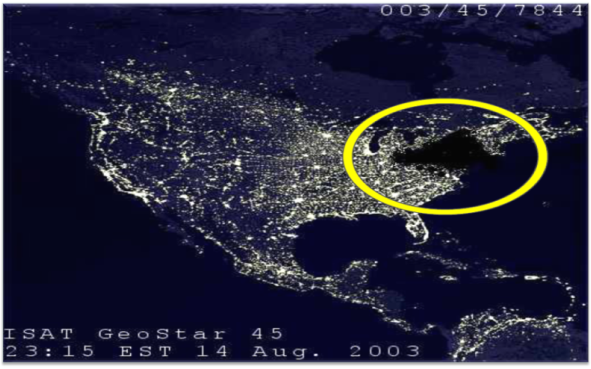Electricity has become an indispensable part of modern life, powering our homes, businesses, and essential services. However, this reliance on electricity also means that when power outages occur, they can have profound consequences. Blackouts—large-scale power outages that affect vast areas—can bring entire cities to a standstill, impacting not only our daily routines but also public safety and the economy. This blog post will explore what happens during a blackout, the underlying causes, and the consequences of these events by examining a significant historical example.
What Happens During a Blackout?
A blackout occurs when a large portion of the electrical grid loses power, either due to a sudden surge in demand or the failure of critical equipment. The causes of blackouts vary, but common factors include extreme weather events, accidents, equipment failures, and even cyberattacks. Regardless of the reason, a blackout disrupts the flow of electricity through the grid, leaving large numbers of people without power.
During a blackout, everyday conveniences like lighting, heating, and air conditioning are lost, while essential services such as hospitals and emergency response teams may rely on backup generators to maintain operations. Traffic lights cease to function, leading to traffic congestion and increased risk of accidents. Public transportation may be halted or severely limited, leaving commuters stranded. Cellular and internet services can also be disrupted, further isolating individuals and communities.
A Historical Example: The Northeast Blackout of 2003
The Northeast Blackout of 2003 in the USA is one of the most significant examples of a large-scale blackout in recent history. On August 14, 2003, a power line in Ohio sagged and came into contact with a tree, causing a small local outage. This seemingly minor event, combined with a software bug in the alarm system of the regional power company, FirstEnergy, cascaded into a massive blackout that ultimately affected approximately 50 million people across the United States and Canada.
Within minutes, power plants began to shut down, leaving large portions of New York, Ohio, Michigan, Pennsylvania, New Jersey, Connecticut, Massachusetts, and Ontario without electricity. In some areas, power was not fully restored for up to four days.

The Consequences of the Northeast Blackout
The Northeast Blackout had widespread social, economic, and environmental consequences. As electricity-dependent systems failed, transportation came to a standstill, stranding commuters and causing widespread traffic chaos. Many businesses were forced to close, resulting in billions of dollars in lost revenue and productivity. Emergency services were stretched thin, responding to incidents ranging from elevator rescues to an increased number of medical emergencies.
The blackout also highlighted the vulnerability of critical infrastructure, such as water treatment plants and nuclear power stations. In some instances, untreated sewage was released into waterways, causing environmental damage. Several nuclear power plants had to shut down as a precautionary measure, with one plant in Ohio experiencing a minor leak.
Conclusion
Blackouts serve as a stark reminder of our reliance on electricity and the fragility of the electrical grid. The Northeast Blackout of 2003 (read more about it here) showed the wide-ranging consequences of such an event, impacting not only daily life but also public safety, the economy, and the environment. As we continue to depend on electricity, it becomes increasingly important to invest in grid modernisation, diversify our energy sources, and develop strategies to prevent and mitigate the impact of future blackouts.
